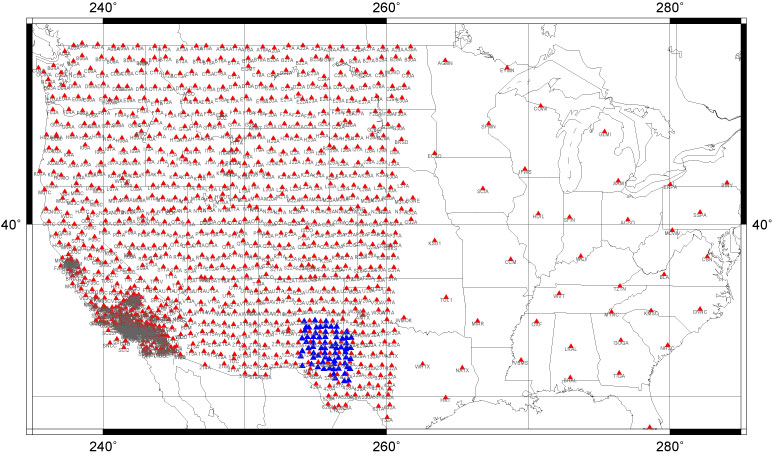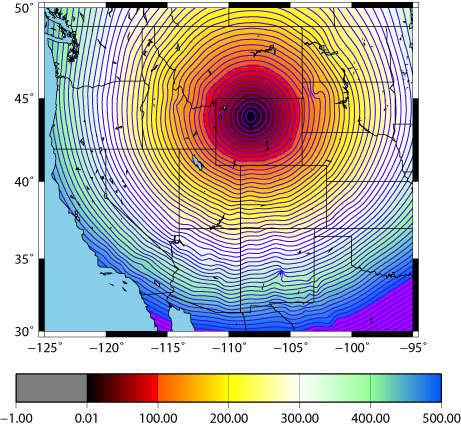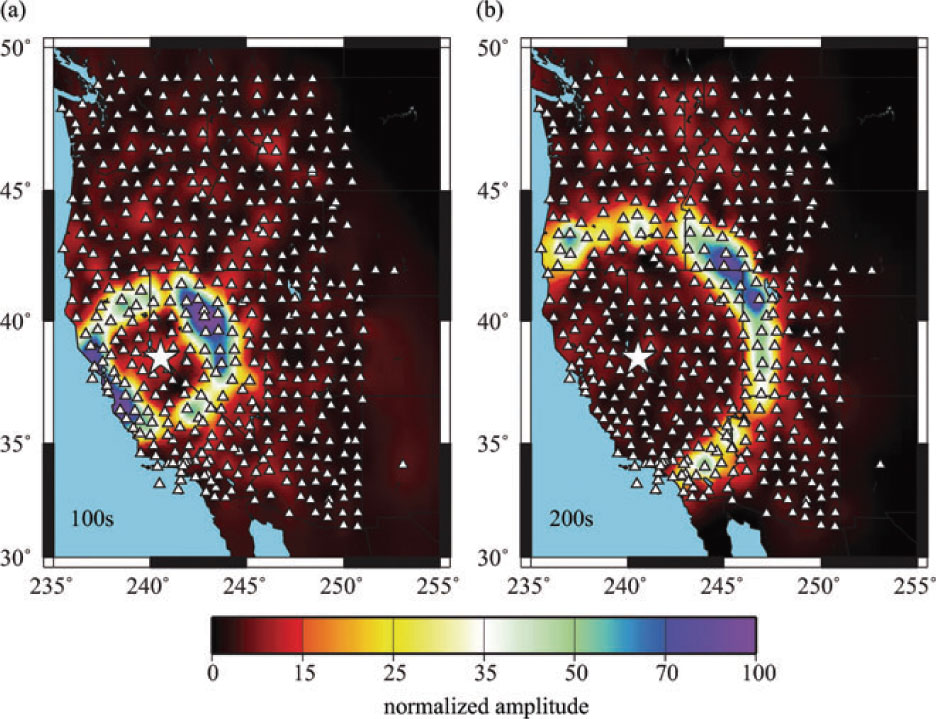|
High resolution ambient noise surface wave tomography is being applied as the USArray Transportable Array (TA) component of Earthscope moves across the western United States. The method is applied both on a monthly basis and to the cumulative TA data set.
Ambient seismic noise contains a significant component of Rayleigh and Love wave energy from which the Green function between pairs of stations can be estimated by cross-correlating long noise sequences. Surface wave group speeds are measured on the estimated Green functions. Early efforts were applied to records from USArray TA stations in Southern California and resulted in the construction of high-resolution short-period (7-18 s) surface Rayleigh wave group dispersion maps and the imaging of the principal crustal geological units in Southern California (Shapiro et al., Science, 307, 1615, 2005).
As the spatial coverage of the TA has improved since the inception of USArray, the number of receiver pairs and the resulting inter-station paths have increased proportionately. We are tracking the TA to extend surface wave analysis by constructing cross-correlations between all contemporaneously located stations. The purpose is to obtain short period (7-25 s) Rayleigh wave group and phase speed dispersion curves and velocity maps across the western United States. Newly imaged tomographic features are seen to emerge as TA stations are installed and then resolution (the clarity and reliability of the imaged features) improves.
Here we present a sampling of the results, in particular images of Rayleigh wave phase speed maps at 8, 10, 12, 14, 16, 20, and 30 seconds period, resolution maps, and the ray paths used in each tomographic inversion for each month since October 2004. All of them are using a new technique named Eikonal Tomography developed by Fan-chi Lin. The depth to which surface waves are sensitive increases with period; e.g., 8-seconds period Rayleigh group waves are sensitive to a depth of about 10 km whereas the 25-seconds period waves are sensitive to depths of about 30 km. Resolution is reported as twice the standard deviation (two-sigma value, in kilometers) resulting from fitting a 2D Gaussian to the resolution kernel at each point. In addition, maps from the cumulative data are presented together with animations that highlight the improvements achieved as the TA grows across the western US. |
|
|



